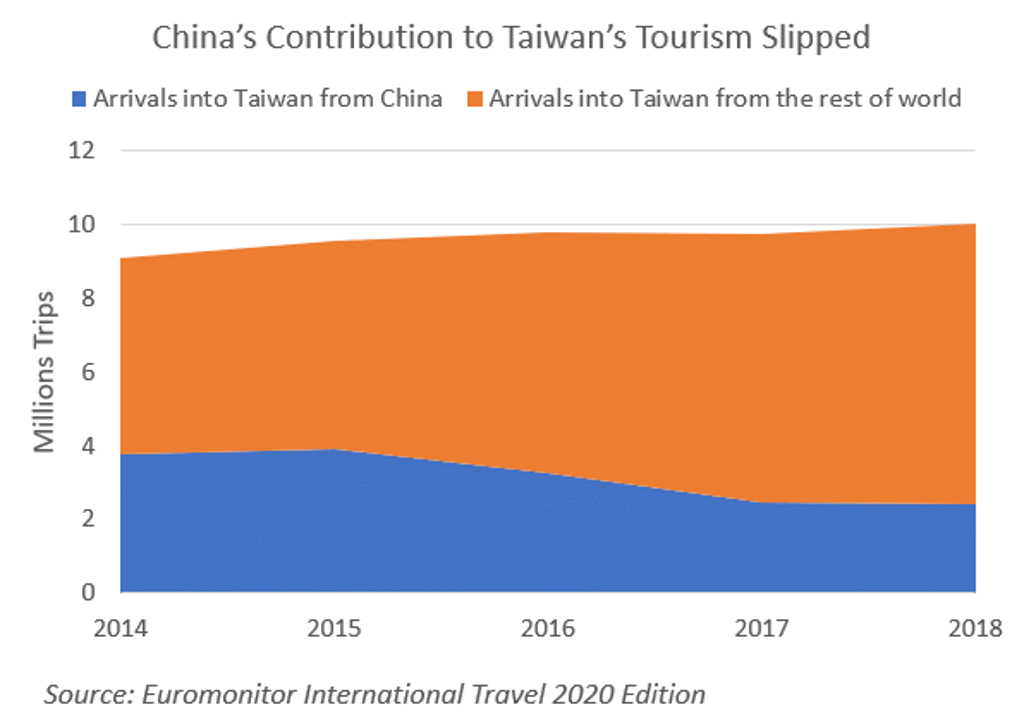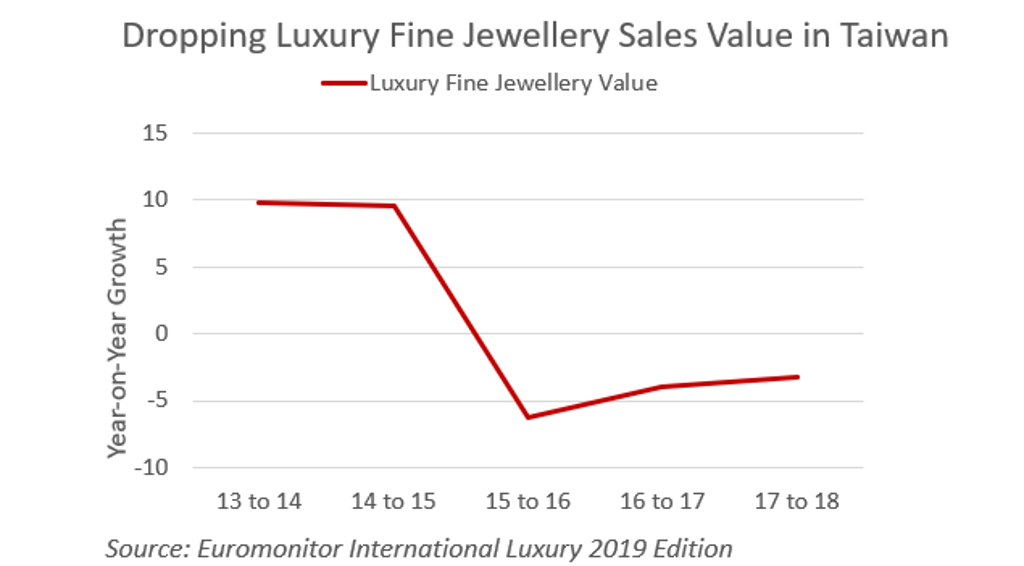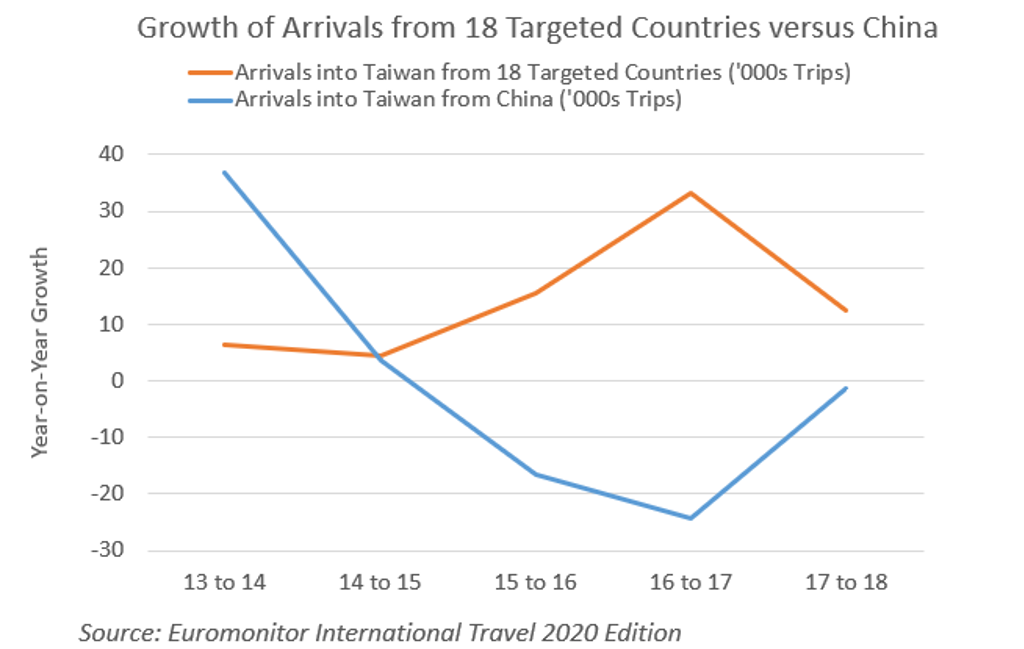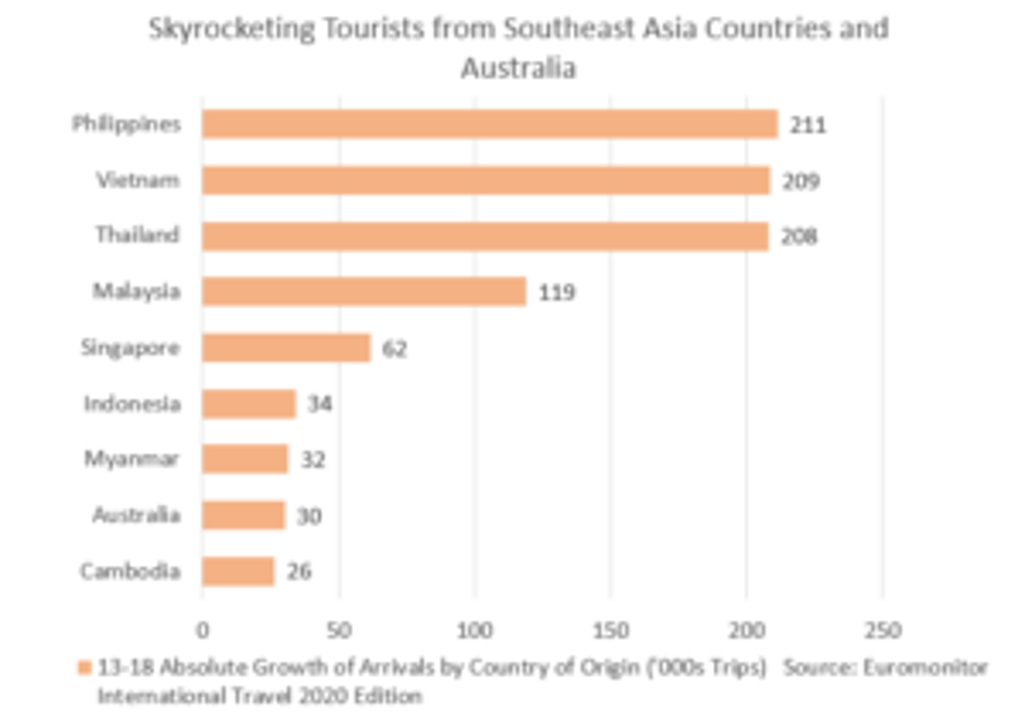Taiwan has long been one of China’s favourite tourist destinations due to its proximity (a one-hour flight to Shanghai and three-hour flight to Beijing) and lack of language barrier. In fact, since 2010, most travellers to Taiwan are from China. After seven years of consecutive growth, the inflow of Chinese tourists into the country came to a halt and started to decrease in 2016. Whether because Chinese tourists suddenly diverted their interest to other destinations or due to the tightening on Visa application to Taiwan, arrivals from China experienced a sharp drop during the period spanning 2016 to 2018.

How much did this impact Taiwan? Some industries suffered more than others. Among the most heavily impacted industries was fine jewellery, which is strongly sought after by Chinese tourists when travelling in Taiwan. The low domestic demand combined with the high reliance on Chinese tourists for fine jewellery triggered a sharp decline in sales in recent years.

Despite the decreasing number of travellers from China, the total arrivals in Taiwan continued to grow in the period 2016-2018. To ease the impact of plummeting Chinese tourists, from 2016 the Taiwan Tourism Bureau shifted its focus to targeting travellers from 16 other Southeast Asian countries, and Australia and New Zealand as part of Tsai Government’s New Southbound Policy.
Actions taken include Visa-free programs, subsidies for Southeast Asia-language-speaking tour guides and promoting Muslim-friendly restaurant certification. Meanwhile, several new routes were launched in the region, including Taipei to Auckland (Air New Zealand), Seri Begawan (Royal Brunei Airlines), and Chiang Mai (EVA Air and Air Asia), as a few examples. Due to the Taiwan government’s efforts, newly launched routes, as well as marketing campaigns to promote Taiwan, arrivals from these 18 countries recorded stunning growth since 2016.


Will this strategy be able to cushion the impact of the new ban on individual travellers to Taiwan announced by China on August 2019? This ban, which suspends the issuance of travel documents to all individual travellers from 47 Chinese cities, applies a sharp brake to Chinese tourists coming to Taiwan without organised tour groups.
Some are concerned that the new ban will take a toll on certain industries, while some see it as a test to re-examine Taiwan tourism’s resilience after the efforts of the New Southbound Policy, over the past three years. Despite the uncertainty of the impact this new ban might have, Taiwan is making an effort to diversify the stream of tourism.
